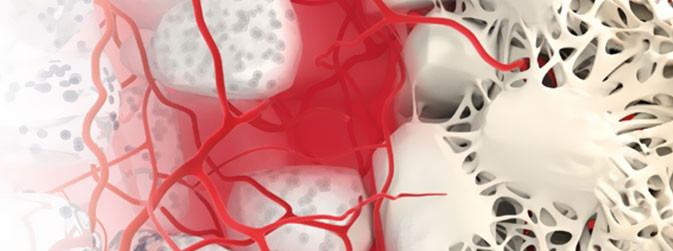
Substitutos ósseo sintético . Synthetic bone substitutes . Sustitutos óseos sintéticos
BonAlive® (S53P4 bioactive glass) can be regarded as a new generation synthetic bone graft substitute. BonAlive® is not only osteoconductive 19, 20, but due to its bioactive composition it stimulates or promotes new bone formation 24. It works by leaching out ions that react with the body fluids, which results in transforming the granule surface chemically into one that resem- bles the chemical composition and structure of natural bone tissue. Leaching of the ions stimulates continuous bone tissue growth (osteostimulation*) and is also the reason for the unique bacterial growth inhibiting property of BonAlive®29-34.In short, BonAlive® is a synthetic, osteoconductive*, osteostimulative* (non-osteoinductive*) and bacterial growth inhibiting material, composed of SiO2 53%, Na2O 23%, CaO 20%, P2O5 4% (by weight).
Leaching
Source: Wikipedia, the free Encyclopedia.
Leaching is the process by which inorganic – , organic contaminants or radionuclides are released from the solid phase into the waterphase under the influence of mineral dissolution, desorption, complexation processes as affected by pH, redox, dissolved organic matter and (micro)biological activity. The process itself is universal, as any material exposed to contact with water will leach components from its surface or its interior depending on the porosity of the material considered.
How BonAlive® works in the body, early phase reactions
Immediately after BonAlive® granules are implanted, a series of reactions are initiated. The initial short-term reactions can be presented in phases (reviewed by Hench LL; Bioactive glasses for in situ tissue regeneration. J Biomater Sci, 2004,15(4):543-562):
Phase I reactions
The first stage is the loss of sodium ions from the surface of BonAlive®. This reaction begins very rapidly, within minutes of material exposure to bodily fluids and creates a dealkalisation of the surface layer with a net negative surface charge. During these first minutes of exposure of a bioactive glass to an aqueous environment, the loss of sodium causes a localised break- down of the silica network resulting in the formation of a silica-rich surface layer. This surface is highly porous.
Phase II reactions
Following the formation of the silica-rich layer, an amorphous calcium phosphate layer will form on the glass surface. This layer can bind biologic entities such as blood proteins, growth factors and collagen. The calcium phosphate layer will subse- quently crystallise into a hydroxyapatite layer, which has been described as the bonding layer. This surface is chemically and structurally nearly identical to natural bone mineral, thus enabling the body tissues to attach to it directly. As the reactivity continues, this surface hydroxyapatite layer grows in thickness to form a bonding zone of 100–150 µm. Phase II reactions oc- cur in about a day after implantation.
Phase III reactions
Osteogenic cells, such as osteoblasts and mesenchymal stem cells will infiltrate into the graft area. Cells interact with the bone-like hydroxyapatite surface and subsequently initiate the bone forming pathway.
Progressing steps of bone formation with BonAlive®
The one thing that clearly differentiates BonAlive® from its competitors is its bacterial growth inhibiting property29-34. This unique property is based on two simultaneous processes that occur when BonAlive® reacts with body fluids.
1) Sodium re- leased from the surface of BonAlive® induces an elevation of the pH which is not favourable for bacteria.
2) Ions (Na, Ca, P and Si) released from the surface give rise to an increase in osmotic pressure, i.e. an environment where the bacteria cannot grow. Human – or broadly, eukaryotic cells are able to protect themselves from these kinds of external challenges but the simple prokaryotic structure of bacteria can not cope with them. Bacterial species can develop resistance towards antibiotics (e.g. Methicillin-resistant Staphylococcus aureus; MRSA) but they cannot adapt so easily to the conditions at and around BonAlive®, making it a powerful tool for today and the future in the treatment of bone cavities derived from chronic bone infections.
1 week
Hydroxyapatite covers the surface of the granules.
1 month
Osteoblasts and mesenchymal stem cells infiltrate the graft area and osteoid tissue is formed.
1 year
New bone surrounds.
